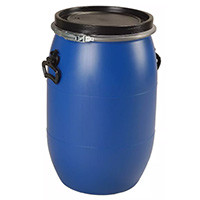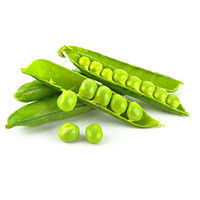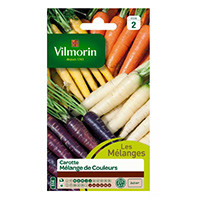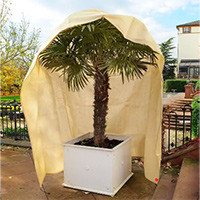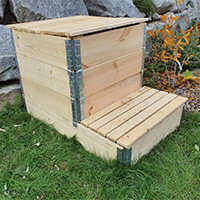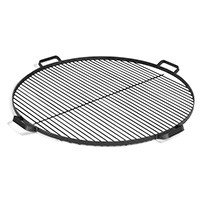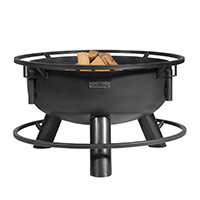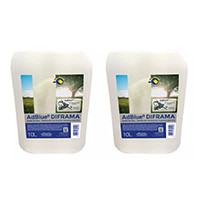The arrival of spring brings with it new life and energy to our environment. It is also the perfect time to observe the birds in our garden. As the temperature rises, migratory birds return to our regions to breed and build their nests. In addition, the breeding birds that spend the winter in our gardens are beginning to be more active.
as nature lovers, watching birds in our garden can be an exciting and rewarding experience. Not only can it help us better understand the biodiversity of our immediate environment, but it can also provide us with a moment of relaxation.
to help identify the birds you might see in your garden this spring, we have compiled a list of different species with key information on how to recognize them.
Here is a non-exhaustive list of birds to watch:
- Robins this is a very common and popular bird species in many parts of the world, including Europe, North America and Asia. They are often considered familiar garden birds and are highly valued for their melodious song and sociable behavior. Robins are about 15 to 20 cm long and can weigh 20 to 30 g. They have a reddish-brown plumage with black and white patterns on their wings and tail. Their necks are adorned with a bright red band, hence their name.
In winter, robins can become more social and tolerant of humans, often foraging for food in gardens to compensate for their reduced natural food supply. However, it is important to note that it is best not to overfeed them, as this can disrupt their natural feeding behavior and make them dependent on human food. - Sparrows sparrows: This is a common and abundant bird species throughout the world, including Europe, North America and Asia. They are often considered familiar city birds and are highly valued for their curious and sociable behavior. Sparrows are usually between 12 and 15 cm long and can weigh between 20 and 30 g. They have grayish-brown plumage with white patterns on their wings and tail. Their head is usually black with a white band above the eye, giving a distinctive look to their face
- Warblers warblers are a family of passerine birds with over 60 different species worldwide. In Europe, the common warbler and the garden warbler are the most common. Warblers average 10 to 12 cm in length and can weigh between 10 and 15 g. They have colorful and varied plumage, often including brightly colored patterns, stripes and spots. Garden warblers, for example, have green and yellow feathers on their backs, brown wings and a black tail.
Warblers are active and social birds, often seen flying around gardens and forests in search of food. They feed mainly on small insects, seeds and fruit, and can often be seen hopping around on the ground or on branches in search of food. - Blackbirds blackbirds: Blackbirds are a genus of birds in the family Turdidae, comprising several species commonly found throughout the world. The most commonly seen blackbirds in Europe include the blackbird, the American robin and the African robin. Blackbirds are medium-sized birds, usually measuring between 20 and 30 cm in length and weighing between 30 and 50 g. They have bright, colorful plumage, often including black, brown or blue feathers with white or gray stripes.
Robins are also known for their melodious and varied song, often heard in gardens and forests in summer. Their song is often considered a sign of spring and can add a touch of cheerfulness and music to the environment.
Blackbirds are very common garden birds, often seen flying from branch to branch in search of food. They feed primarily on insects, berries and small fruits, and can also be seen foraging on the ground. - Tree Finches tree finches are small birds belonging to the Fringillidae family. They are also known as black-headed finches because of their distinctive head color. Tree finches are commonly found in Europe and North America, as well as in many other places around the world. Tree finches are about 12 to 15 cm long and weigh about 15 to 20 g. They have mostly olive green plumage, with a black breast and head, and white wing bands. Tree finches also have a short, thick tail.
In addition to their distinctive appearance, tree finches are also known for their melodious and varied song. Their song can be heard in gardens and forests during the summer months, adding a touch of music to nature. They feed mainly on seeds, berries and insects. - Turtle Doves : Turtle doves are a group of birds in the Columbidae family, which includes species such as the collared dove, the turtle dove and the tree dove. These are birds commonly found in many parts of the world, including Europe, North America and Asia. Turtle doves are usually between 25 and 30 cm in length and have soft, silky plumage. The color of their plumage varies depending on the species, ranging from green, gray and brown to pink and white. Doves also have large, curved beaks, which allow them to eat fruits, seeds and berries.
Doves are also known for their melodious song, which can be heard in gardens during the summer months. Their song is often soft and soothing. - Chickadees chickadees: Chickadees are a group of birds in the Paridae family, which includes species such as the blue tit, the great tit, the crested tit and the black tit. They are very common birds in many parts of the world, including Europe, North America and Asia. Chickadees range in size from 9 to 20 cm in length and have distinct and vibrant colors, such as blue, green, black and red. Their soft, thick plumage protects them from the cold during the winter months. Chickadees also have strong bills and short legs, which help them feed on seeds, berries and insects
Chickadees are often considered friendly and social birds, and can be seen in gardens in groups, feeding or building nests. They are especially active during the summer months, when they can be heard singing their cheerful melody. - Jays : Jays are birds in the Corvidae family, which also includes species such as crows and ravens. There are many species of jays in the world, each with different sizes, colors and behaviors. Jays range in size from 40 to 60 cm in length and have a variety of colors, including black, blue, green, red and white. Their thick, shiny plumage protects them from the cold and rain. Jays also have strong, hooked beaks, which help them open nuts and dig up buried food.
Jays are often considered intelligent and inquisitive birds, able to solve complex problems and remember the location of food for later use. They can often be seen in parks and gardens, feeding on seeds, fruits and insects. - Nightingales : Nightingales are birds in the Phenoscopidae family, which also includes species such as hoopoes and hoopoes. Nightingales are known for their hauntingly melodious song, which can be heard early in the morning and late at night during the breeding season. Nightingales range in size from 16 to 21 cm in length and have a variety of colors, including brown, gray, black and white. Their plumage is soft and dense, which protects them from cold and rain. Nightingales also have short legs and strong claws, which help them climb and hang from branches to sing.
Nightingales are nocturnal birds, spending the day hiding in bushes or trees and coming out at night to sing and feed. They feed on insects, worms and berries, which they can catch in flight or by perching on branches. Nightingales are also skilled nest builders, able to construct complex nests from branches, leaves and feathers. - Northern finches : Northern finches are a small bird in the Fringillidae family, which also includes species such as goldfinches, greenfinches and tarins. Northern finches are also known as sparrows, because of their resemblance to sparrows. Northern finches are about 12-14 cm long and have blue-gray plumage on their backs and wings, with a white belly and gray tail. They also have a bright red spot on their head, which is often more visible in males than females. Northern finches have short legs and strong claws, which help them climb and perch on branches
Northern finches are often considered gregarious and confident birds, which are easy to observe in gardens and forests in winter. They are also known for their melodious and playful song, which can be heard during the breeding season. Northern finches are also migratory, and may migrate to warmer climates during the winter to avoid extreme weather. they feed primarily on seeds, berries and small insects, which they can find by foraging in the snow or perching on branches. - Swallows : Swallows are a group of birds in the family Hirundinidae, which includes over 90 different species worldwide. Swallows are known for their swift and agile flight, as well as their ability to capture insects in flight. They are also often considered auspicious birds, bringing good luck and prosperity to the homes they call home. Swallows are generally between 12 and 20 cm in length, with broad, pointed wings that allow them to fly quickly and easily. The plumage of swallows can vary depending on the species, but most are brightly colored birds with black wings, brown backs and light bellies. Swallows also have strong, straight tails, which help them change direction quickly when hunting insects in flight.
Swallows are often considered beneficial birds, helping to control insect populations in gardens and rural areas. Gardeners can encourage swallows to take up residence in their gardens by building swallow boxes, providing bird food, and preserving natural habitat areas. Swallows are also a sight to behold, with their swift, graceful flight and bright colors bringing a touch of color and vitality to any garden. - Wagtails : Wagtails are a group of waterfowl in the family Motacillidae, which includes about 20 different species worldwide. Wagtails are known for their elegant plumage and migratory habits, as well as their ability to feed in aquatic environments. Wagtails are generally between 12 and 20 cm in length, with thin, pointed wings that allow them to fly quickly and easily. Wagtails' plumage can vary by species, but most are brightly colored birds with brown backs, light bellies and distinctive shoulder colors. Wagtails also have strong, straight tails, which help them maintain their balance when landing on water.
Wagtails are migratory, and can travel thousands of miles to reach their nesting and wintering grounds. Wagtails are often considered beneficial birds, helping to control aquatic insect populations in rural areas and natural settings. Gardeners can encourage wagtails to establish themselves in their gardens by creating aquatic habitats, providing bird food, and preserving natural habitat areas. - Thrushes : Thrushes are a family of migratory birds common in Europe and North America. They are characterized by their brown, mottled plumage, short tails and strong legs. There are several species of thrushes, including the drake thrush, the litorne thrush and the music thrush. Thrushes feed on fruit, berries and earthworms. They can often be seen in gardens and parks, where they search for food sources on the ground. They are also known for their melodious and varied song, which can be heard in woods and gardens during the nesting season.
Thrushes are endangered in some areas due to habitat destruction and illegal hunting. It is important to protect their natural habitats and monitor hunting activities to ensure the survival of these wonderful birds. By monitoring thrushes in your yard, you can help protect this species and preserve the biodiversity of your area. - Kinglets kinglets: Kinglets are small birds belonging to the Regulidae family. They are often considered the smallest birds in the northern hemisphere. Wren are characterized by their bright plumage, short wings and short, sickle-shaped tails. There are several species of kinglets, including the crested kinglet, the ruby-crowned kinglet and the golden kinglet. Kinglets feed primarily on nectar, honeydew and small insects. They can often be seen in gardens, where they feed on nectar-bearing flowers and shrubs. They are also known for their melodious, piercing song, which can be heard in woods and gardens during the nesting season.
Kinglets are peaceful and sociable birds, often seen in groups in gardens. They are important for pollinating flowers and controlling insect pests. By monitoring the kinglets in your garden, you can help protect this species and preserve the biodiversity of your area. - Goldfinches : Goldfinches are small birds belonging to the Fringillidae family. They are characterized by their colorful, striped plumage, including shades of green, yellow, brown and white. There are several species of goldfinches, including the American Goldfinch, the American Goldfinch, and the Sand Goldfinch. Goldfinches feed primarily on plant seeds and small insects, which they can find in gardens, fields and forests. They are often seen feeding on bird feeders or grass stalks. They are also known for their melodious and varied song, which can be heard in gardens and woods during the nesting season.
Goldfinches are sociable and peaceful birds, often seen in groups in gardens and forests. They are important for pollinating plants and controlling insect pests. By monitoring goldfinches in your garden, you can help protect this species and preserve biodiversity in your area.
In conclusion, watching birds in our garden can be an exciting and rewarding activity for nature lovers. Spring is a great time to watch birds, with the return of migrants and the increased activity of nesters. By identifying the different species of birds present in your garden, you can learn more about the biodiversity of your immediate environment and connect with nature in a meaningful way.
importantly, bird watching can also help raise awareness about environmental protection and biodiversity conservation. By learning to appreciate the beauty and complexity of bird life, we can be inspired to care for our planet and preserve these unique species for future generations.
ultimately, simple birding can be a simple yet powerful way to connect with nature, gain personal enrichment, and make a difference for our environment. So get outside, open your eyes wide and listen carefully. You might be surprised at what you can discover in your own backyard.
[creativeslider id="4"]








